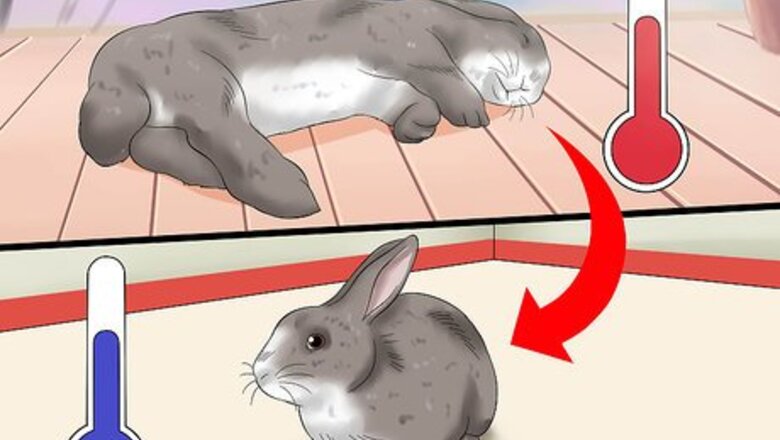
views
X
Research source
This means that an over-heated rabbit goes to a lot of trouble to hide its distress and a rabbit owner must be extra vigilant to identify signs of trouble. Heat stress or stroke can happen quickly if a rabbit is in direct sunlight without access to shade, so always be aware of where you rabbit is and provide the means and opportunities for it to stay cool.[2]
X
Research source
Treating Heatstroke Immediately
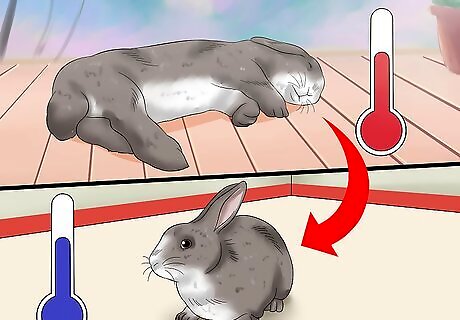
Move the rabbit to a cool space. Once you notice signs of heat stroke, immediately but gently pick the rabbit up and carry it to a cool place. This could be a room with a fan or air conditioning, whatever space you have readily available. At the very least, move the rabbit out of the sun and into the shade.
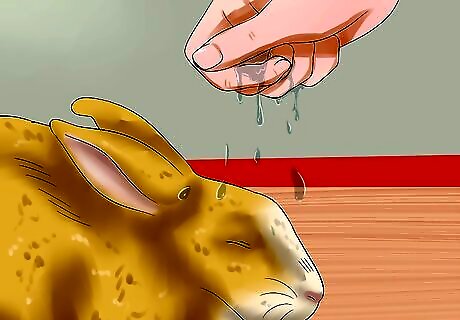
Cool the rabbit down. As an emergency measure, start to cool the rabbit. This can be done by spritzing the rabbit's coat with cool, but not freezing, water, or standing the rabbit in a few inches of tepid water. However, make sure the water is just one or two inches deep, as rabbits will readily panic in deep water. Some people suggest applying rubbing alcohol to the rabbit's paws, as this evaporates quickly and has a cooling action.
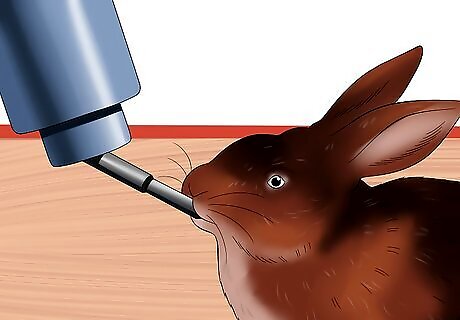
Offer the rabbit some water to drink. It is important to start hydrating the rabbit as soon as possible. Getting cool water into the rabbit's system will help to cool it down on the inside of its body. This is just as important as getting the rabbit's body cool on the outside.
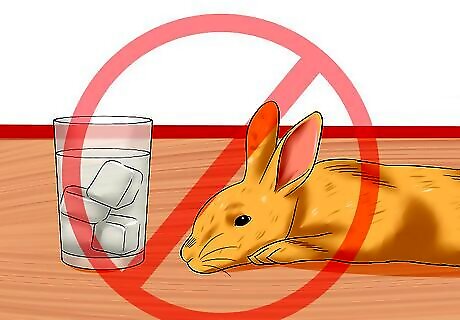
Avoid cooling the rabbit too quickly. Don't use of ice water, as this can cause shock. A gradual reduction in body temperature is preferable.
Getting Veterinary Treatment

Get emergency veterinary treatment. If the rabbit is not showing signs of improvement, then call the vet and tell them you are having an emergency issue with your rabbit. If your regular veterinarian is not available, for instance the problem is occurring on a day the veterinary office is closed, then you should call an emergency veterinary office in your area. Your veterinary office may ask you some questions about your rabbit's condition. Then the person on the phone should help you assess whether the rabbit needs to be seen.
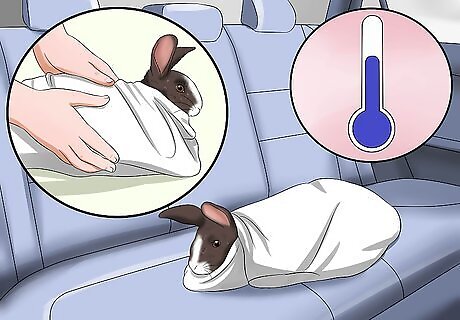
Keep the rabbit cool while in transport. If you need to transport the rabbit to a vet, keep cooling it as you go. Wrap the rabbit in a damp towel and have the air conditioning on in the car. Transporting a rabbit with heat stroke, while continuing to try to cool it down, may require two people. However, if you don't have anyone to help, just keep the temperature in the car cool and give the rabbit access to cool water.
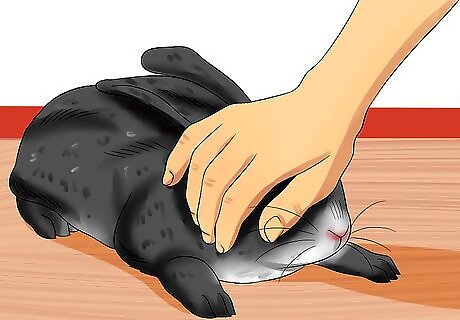
Avoid stressing the rabbit out further. Act calmly and quietly. Some rabbits can really sense stress and react physically to being stressed themselves. They have sensitive systems, so whatever you can do to keep them calm will help. Petting your rabbit softly and covering its eyes may help to keep it calm.
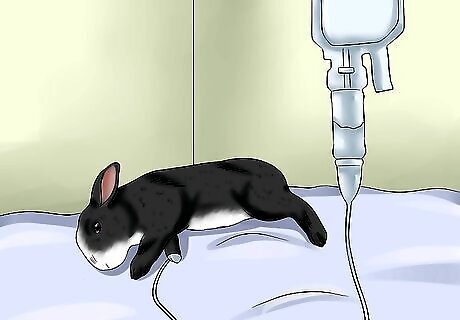
Understand that emergency veterinary treatment usually entails further cooling. In cases of extreme heat stroke, it is necessary to provide cool intravenous fluids. This will allow the veterinarian to bring the rabbit's core temperature down. This is the best, and usually the only, treatment a veterinarian can provide for heat stroke. Getting these fluids can also help vital organs that have started to shut down as a result of dehydration.
Identifying Heatstroke
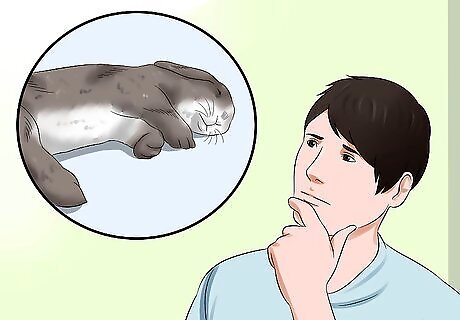
Don't expect the signs to be obvious. You will have to be observant to notice them. In fact, the more obvious the signs are, the more serious the rabbit's condition is. This means that you want to get a rabbit's temperature under control before it is showing the physical signs of heat stroke. That can only be done if you are being an attentive rabbit owner.
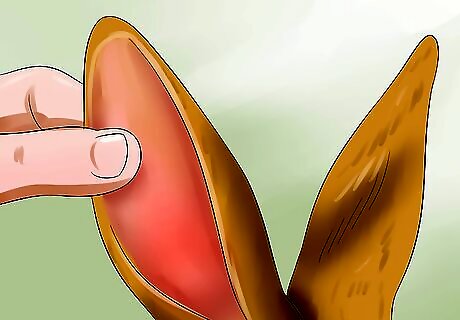
Look for red ears. The earliest hint of impending heat stroke is red ears. This is because the rabbit increases the blood supply to the ears in order to try and lose heat. The ears have less fur, so the heat can more easily come out of the rabbit's body through the exposed skin on the ears.
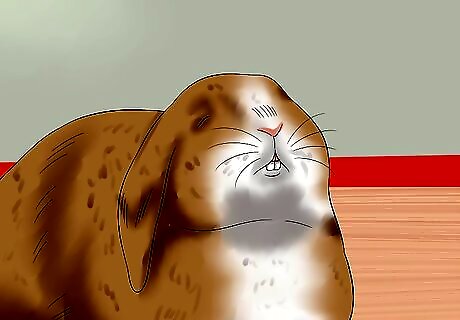
Be on the look out for mouth breathing. Rabbits cannot pant and only sweat through tiny sweat glands in their mouth, so they have no efficient way of cooling off. They usually breathe through their nostrils but when over hot they will open their mouth and attempt to mouth breath. This is unusual and so should be taken seriously.
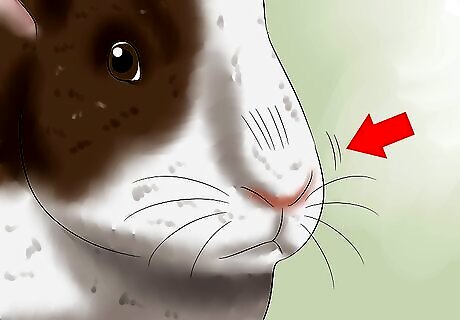
Look for flaring nostrils. In addition to mouth breathing, the rabbit may flare its nostrils. This indicates heavy breathing and breathing more quickly in order to try and lose heat.
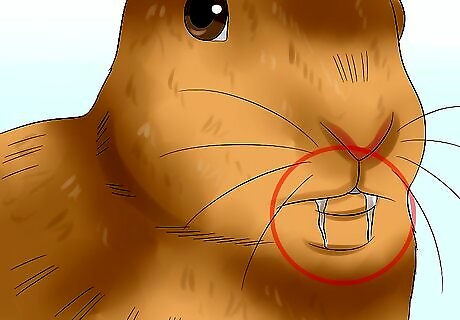
Notice drool or excess saliva. This can indicate a variety of problems in rabbits, most commonly problems with their teeth, but it is also a sign that the rabbit is overheated. The rabbit may drool or dribble saliva in an attempt to lose heat.
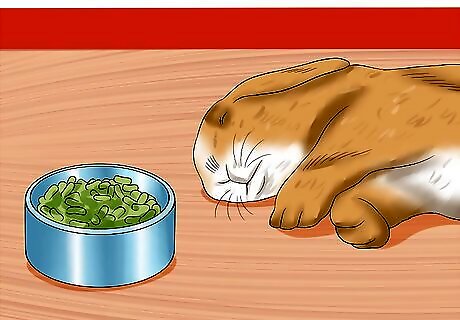
Pay attention to strange behavior. Commonly, heat stroke will cause lethargic and weak behavior. The rabbit will be reluctant to move and wants to stay in the same spot. If forced to move, the rabbit may seem weak and wobbly, or confused. Ultimately, heat stroke leads to convulsions, which can lead to coma and death.
Preventing Heatstroke
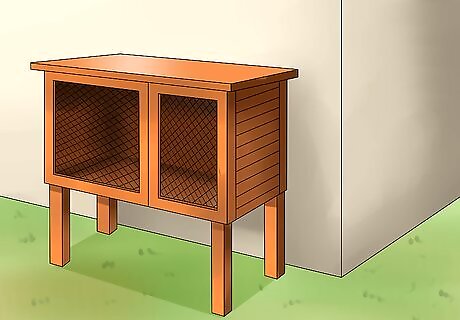
Place the rabbit's hutch in a good location. Be sensible about where you locate the rabbit's hutch and run, taking care to determine how your rabbit will be exposed to the elements. At the least, make sure the rabbit will never be in full sunlight without accessible shade. The hutch should be protected from all types of weather, including rain, snow, and excessive wind, in addition to sun.
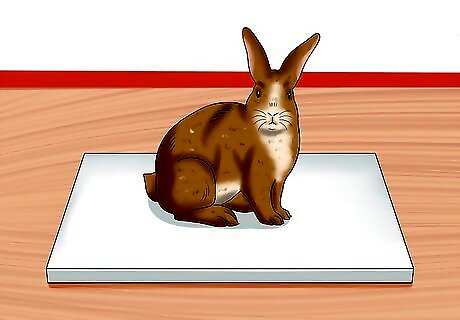
Give your rabbit a way of keeping itself cool. This is especially important on hot days. You could help it keep cool with a large ceramic tile that has been in the fridge and then placed on the floor of the hutch, or with a baking tray containing a shallow depth of cool water for the rabbit to sit in. Another idea is to freeze bottles of water and then place these in the hutch. The rabbit can then lie against the bottles or lick the condensation to cool itself off.
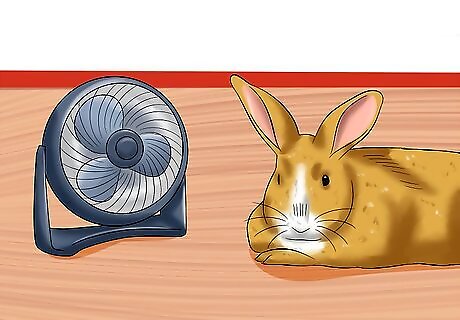
Ensure there is adequate airflow around the hutch or pen. Air movement helps to reduce the temperature, so the hutch shouldn't be somewhere that has totally stagnant air. If it is very warm out, consider placing a fan on floor level, directed at one corner of the hutch, so that the rabbit can choose whether or not to lie in the breeze. Avoid the rabbit being constantly being exposed to the wind from the fan. It should be able to choose whether it needs to cool off.
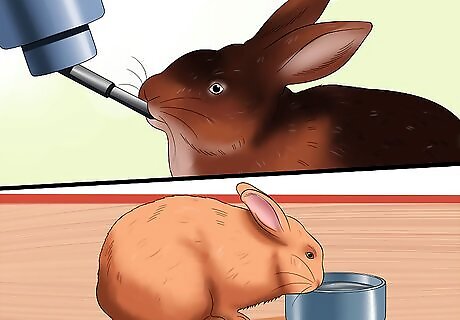
Give the rabbit constant access to water. Plenty of water is an absolute essential when it comes to keeping cool. Provide duplicate drinking bottles or bowls in case one gets knocked over or drunk dry. A dehydrated rabbit is extremely vulnerable to heatstroke.
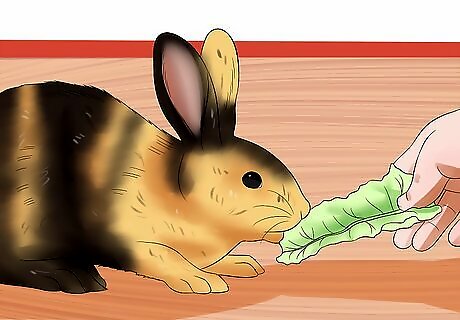
Provide moist vegetables for the rabbit to eat. Moist vegetables can provide the rabbit additional water, which helps with dehydration and heat stroke. A good vegetable to provide is cucumber, as it has a very high moisture content. You can also rinse veggies in water and then leave them wet, so the rabbit takes in extra fluid when eating.
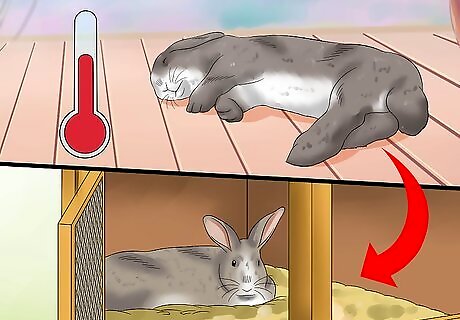
Consider moving your rabbit during extreme weather. You may need to relocate your rabbit if temperatures get too high. Consider moving it into the shade, into a cool out building, or even into your home, when the weather is too bad. This can simply be a temporary measure, just to assure that your rabbit does not suffer from the heat.
















Comments
0 comment